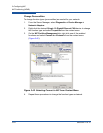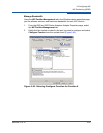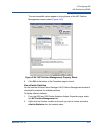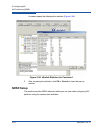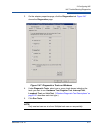
2–Configuring NIC
NIC Partitioning (NPAR)
2-72 SN0054671-00 B
Q: What’s the difference between a physical function and a virtual function?
Physical functions are full-featured PCIe functions that operate like normal PCI
physical devices in terms of discovery, configuration, and management. Virtual
functions are “lightweight” (minimized functionality support) PCIe functions that
are derived from the physical PCIe functions.
Q: Is NPAR included when I purchase my adapter?
Yes. Full NPAR functionality comes with your purchase. There are no additional
licensing fees incurred.
Q: What protocols are supported with NPAR?
The function types supported on the virtual ports are TCP/IP (NIC), iSCSI, and
FCoE.
Q: How is the QoS set? How does the bandwidth allocation work? What
tools are used to set bandwidth?
The QoS parameter setting is supported from a minimum bandwidth of 100Mbps
to 10Gbps. The settings can be allocated in blocks of 100Mbps increments (as a
percentage of the total bandwidth).
There are three tools that users can employ to configure NPAR functionality:
Pre-boot utility
QLogic’s QConvergeConsole management tool (GUI and CLI)
Microsoft Windows
®
properties pages
Q: Is one virtual port’s unused bandwidth available for use by other active
virtual ports?
Yes. The minimum settings are bandwidth guarantees, specified as a percentage
of the link speed. If one or more virtual ports are not consuming their full allotment,
that bandwidth can be temporarily consumed by other virtual ports if they need
more than their guaranteed allotment.
Q: What OSs are supported with NPAR?
Currently, the following OS support is available: Microsoft Windows Server
™
2003
R2/SP2, 2008/2008 SP2/2008 R2; Red Hat Linux
®
5.5, 6.0; Novell
®
SLES 10 SP3,
SLES 11 SP1. For the latest list of supported operating systems, please check the
QLogic Web site.



